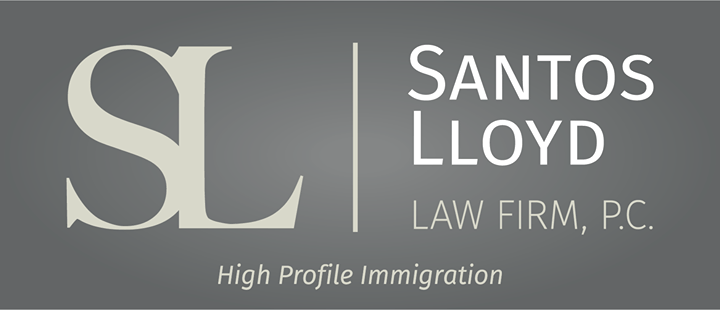Overview of the EB-5 Process
Kyle Huffman • March 14, 2024
Embarking on the EB-5 immigration journey is both a profound personal endeavor and a strategic investment decision. For individuals seeking to make the United States their new home while contributing to its economic landscape, the EB-5 Immigrant Investor Program offers a pathway unlike any other. This program, established by the U.S. government in 1990, provides foreign investors with the opportunity to obtain permanent residency in the United States by investing in job-creating enterprises. However, navigating the complexities of the EB-5 process requires a thorough understanding of its intricacies, requirements, and potential pitfalls. In this guide, we provide a brief overview of the steps and documents involved in the EB-5 immigration process, shedding light on its key components, eligibility criteria, investment options, and procedural steps, empowering prospective investors with the knowledge needed to embark on this transformative journey with confidence.
Before selecting a project and making the investment, it is important for an EB-5 investor to meet with an immigration attorney to strategize for the application. It is required to show the Immigration Service that all funds used in the investment were lawfully earned and retained, so your attorney will want to understand where the money for the investment is coming from and where it has been held since it was earned.
Once satisfied with the source and tracing of funds, the investor can select a project to invest in. Following the passage of the EB-5 Reform & Integrity Act, certain investment projects have already been pre-approved by USCIS by filing form I-956 and receiving designation as a Regional Investment Center. The required minimum investment is $1,050,000 by default; however, this amount is reduced for investment centers in “Targeted Employment Areas” to $800,000.
After submitting the investment to the regional center, the investor will then work with their attorney to create the I-526 petition. At this stage of the case, it is time to show USCIS the source and tracing of all of the funds used for the investment. The types documentation required in order to show the lawful source and tracing of funds is extremely broad and highly dependent on where the money is coming from in each particular case, but the most common documents include W-2 or 1099 tax forms,
federal and state tax returns, bank account statements, purchase and sale contracts from the sale of real estate, stock certificates, loan contracts, inheritance documents, and wire transfer records, among many other possibilities.
EB-5 applicants can either process their green cards
through USCIS by filing an I-485 application for Adjustment of Status, or process through the consulate in their home country. If already in the United States on another valid status, the Adjustment of Status application can be submitted concurrently with the I-526 petition. If processing through a consulate overseas, the investor will have to wait until the I-526 is approved before beginning the consular process. The primary applicant, along with a spouse and any unmarried children under 21 years of age are able to receive permanent residency through the EB-5 process.
At the completion of either process, whether requesting the Green Card within the United States or seeking entry through a consulate, USCIS will issue conditional green cards, with a validity of two years. Within the last three months before the conditional green card expires, the investor and family will need to file an I-829 application
for removal of conditions on the green card. At this stage, nearly two years after the investment has been made, the Immigration Service is confirming whether the investment remains in the project and the requisite 10 jobs have been created. Following I-829 approval, the investor and their family will receive permanent green cards, with a 10-year validity.
The investor and family will be able to apply for United States Citizenship five years after the initial green card is issued. The conditional green card does count for this purpose, so citizenship will become a possibility approximately 3 years after the permanent green cards are issued.
In conclusion, the EB-5 Immigrant Investor Program stands as a unique avenue for individuals around the globe to fulfill their aspirations of living and thriving in the United States. Through strategic investment and dedication to job creation, participants not only secure permanent residency but also contribute to the nation's economic growth and prosperity. However, it is crucial for prospective investors to approach the EB-5 process with meticulous planning, thorough research, and expert guidance to navigate its complexities successfully. By understanding the program's requirements, exploring investment options, and adhering to procedural guidelines, aspiring immigrants can embark on their EB-5 journey with clarity and confidence. Ultimately, the EB-5 program represents more than just a pathway to residency—it embodies the spirit of entrepreneurship, innovation, and opportunity that defines the American dream.
If you believe you may qualify for the EB-5 program or if you have any questions, please schedule a consultation with one of our experienced attorneys and we will be more than happy to assist you.
This blog is not intended to be legal advice and nothing here should be construed as establishing an attorney client relationship. Please schedule a consultation with an immigration attorney before acting on any information read here.
Kyle Huffman
Similar Posts

Entrepreneurs and investors are key drivers of economic growth and job creation, and the United States has long been a destination of choice for those seeking to start or grow their businesses. However, navigating the U.S. immigration system can be complex and time-consuming. In this article, we will discuss the various non-immigrant visa options available to entrepreneurs and investors looking to enter the United States. L-1 Intracompany Transferee Visa The L-1 Intracompany Transferee Visa is a visa category specifically designed for executives, managers, and employees possessing specialized knowledge who are relocating from a foreign corporation to a U.S. affiliate. The eligibility for an L-1 visa requires the foreign corporation and the U.S. affiliate to be connected through common ownership or control. Transferees must also demonstrate that they have been employed abroad for at least 12 months in an executive, managerial, and specialized knowledge capacity. An employee being relocated might also be heading to the United States to set up an office if the company doesn't have an existing presence there. The L-1 visa isn't the best choice for someone in the early stages of launching a company, particularly if the business is being established in the United States. However, it could be a viable option for an entrepreneur who has, for instance, kick-started a business outside of the United States which will maintain its operations, or if the entrepreneur merges operations with a foreign company where they have previously been employed. E-1 Treaty Trader Visa E-1 Treaty Trader Visa category is designated for nationals of countries with which the U.S. maintains treaties of commerce and navigation. An entrepreneur qualifying for an E-1 visa must be entering the U.S. to carry out substantial trade, including trade in services or technology, principally between the U.S. and the treaty country. Trade, as defined, must involve an exchange of goods, money, or services. Virtually any goods or services can meet this requirement. The transaction flow between the two countries should be verifiable, typically done through documents such as purchase orders, wire transfers, or bills of lading. To determine the substantiality of the trade, the Department of State (DOS) will assess the frequency and monetary value of the transactions. More regular, high-value transactions are given greater consideration. However, smaller businesses can also qualify if they can demonstrate that the transaction volume is sufficient to support the treaty trader(s) and their family. The DOS applies a general rule stating that at least 50% of the trade must be between the United States and the treaty country. Thus, applicants should provide evidence of their total business transactions and proof that a minimum of 50% is between the two countries. The remaining trade can be domestic or international with other countries. Even if a US-based subsidiary meets the 50% requirement, the parent company abroad does not necessarily need to conduct 50% of its trade with the United States. Due to the requirement of demonstrating substantial trade history, it may be challenging for early-stage startups to qualify for an E-1. This visa type is more frequently used by established entrepreneurs with a foreign business and a US customer base, who wish to continue their operations in the US. In some instances, foreign firms aiming to penetrate the US market may use an E-1 for a newly established US subsidiary and start moving inventory for sale in the US. In this case, all trade may be between the foreign parent and US subsidiary, thereby comfortably meeting the 50% threshold. E-2 Treaty Investor Visa E-2 Treaty Investor Visa is for citizens of countries that have a treaty of commerce and navigation with the United States. To qualify for an E-2 visa, an entrepreneur must be coming to the United States to develop and direct the operations of a business in which they have invested, or are in the process of investing, a substantial amount of capital. In the classic example of an E-2 investment, the E-2 investor transfers their personal wealth from a foreign bank account into the bank account of their new US enterprise, thereby establishing their investment. However, the Foreign Affairs Manual (FAM) provides some flexibility, enabling the officer to consider other "arrangements" as an "investment." For those not intending to finance the E-2 enterprise entirely or partially with their personal funds, the nationality of other investors needs to be considered to ensure that at least 50% of the company shares remain in the hands of nationals from the E-2 treaty country. For instance, suppose one co-founder is American and the other is French, and they each own 50% of the company, contributing $40,000 from their personal wealth as initial capital for the company. To raise additional funds, they each decide to swap 7% of their equity (14% in total) with an angel investor for $150,000. If the angel investor is also French, then 57% of the company is now owned by French nationals; but if the angel is a U.S. citizen, then only 43% of the company is French, and it no longer qualifies as a French company for E-2 purposes. In this scenario, the founders will need to switch to another visa type before the equity exchange, as their E-2 will no longer be valid when the company loses its treaty nationality. A central concern for every E-2 application is the "source of funds." The applicant must clearly demonstrate the lawful origin of their investment funds, along with evidence of ownership and control. Moreover, to be classified as an E-2 investment, the invested assets or funds must be "at risk." This means that if the business fails, the investment is proportionately lost. Though the investment capital may be loan-based, the loan cannot be secured against the assets of the E-2 enterprise. Personal loans, which may be secured by personal assets like a second mortgage or unsecured loans typically obtained from family, friends, or business partners, are permissible. O-1 Visa The O-1 visa category is a unique and advantageous option for startup entrepreneurs and business owners who have demonstrated exceptional prowess in their field. The O-1A visa variant specifically caters to individuals exhibiting extraordinary ability in the sciences, education, business, or athletics. This makes it a viable avenue for those looking to establish or expand their business ventures in the US without the necessity of maintaining an overseas office or providing evidence of trade and investment, as required by L-1 and E-1/E-2 visas. Unlike the more traditional visa categories, the O-1A visa shifts the emphasis onto the beneficiary's individual achievements within their domain. It demands that the beneficiary meets at least three of the eight regulatory criteria set forth by the US Immigration Services. These criteria form a comprehensive measure of the individual's accomplishments, recognition, and overall standing in their respective field. For instance, if the beneficiary has been the recipient of nationally or internationally recognized prizes or awards, it highlights their excellence and industry-leading competence. Alternatively, membership in prestigious associations which require commendable achievements as judged by recognized experts can also serve as evidence of their extraordinary ability. The O-1 visa offers an alternate route that places an emphasis on individual expertise and recognition in the applicant's field, rather than specific trade or investment quotas. This visa is especially beneficial for those who have demonstrated exceptional capability and achieved a high degree of success in their respective business domain. Overall, the O-1A visa offers an effective immigration route for extraordinarily talented entrepreneurs and business owners. By meeting and surpassing the eligibility criteria, they can gain access to the vast opportunities in the US market, thereby furthering their business ventures and contributing to the economic growth and diversification of the US. Conclusion For foreign entrepreneurs and investors, several U.S. immigration options are available: the E-1 treaty trader visa, the E-2 treaty investor visa, the L-1 intra-company transferee visa, and the O-1 visa for individuals with extraordinary ability. While E-1 and E-2 visas center on trade and investment respectively, the L-1 is for managers or executives transferring to a U.S. branch of their company, and the O-1 visa acknowledges individual expertise and accomplishments. Each visa has unique prerequisites, necessitating the guidance of an immigration attorney for optimal strategy selection. Correct navigation of these options opens vast U.S. entrepreneurial opportunities and resources.

There are several types of visas that allow you to come to the United States and work. Employment-based visas will give you the opportunity to live and work in the U.S. Your education, skills, and experience are some of the things used to determine who is eligible for an employment-based visa. One “EB” visa many people qualify for is an EB-3 visa.

Great news for our EB-2 NIW clients! USCIS continues to expand on premium processing for petitioners with a pending I-140, Immigrant Petition for Alien Workers under the EB-2 and EB-2 classifications. This third phase only applies to previously filed Form I-140 petitions under the E13 multinational executive and manager classification or E21 classification as a member of professions with advanced degrees or exceptional ability seeking a national interest waiver (NIW). Clients who are eligible for a premium processing upgrade as of USCIS' announcement on September 15, 2022 are E13 multinational executive and manager petitions received on or before January 1, 2022; and E21 NIW petitions received on or before February 1, 2022 Eligible petitions may submit Form I-907 to USCIS with the required filing fee of $2,500. The premium processing timeframe is 45 days from the date USCIS receives the request for premium processing. Santos Lloyd has been steadily receiving I-140 decisions, so we anticipate that more decisions will be coming throughout the next few months until the end of the year. We will continue to keep updated on policy changes and updates from USCIS and will post updates regularly on these changes. For clients who are eligible and interested in the upgrade, please contact our office for further information. If you are not yet eligible for the upgrade, please await further information from USCIS as we anticipate more phases coming in the months to come.

Once you have connected with a college program, have been admitted to the school, and deemed eligible to compete athletically, you will need to secure an F-1 student visa in order to actually attend your new college and begin your time as a student athlete. The first step in the visa process is to receive your Form I-2

For many talented athletes around the world, U.S. college athletics represent a remarkable opportunity to combine elite athletic competition with higher education. In sports such as basketball, soccer, track and field, and tennis, among others, hundreds of colleges and universities across the United States offer struct

Under the new regulation, if a person filed or files Form I-589, Application for Asylum and for Withholding of Removal after October 1, 2024, and the application remains pending with USCIS for 365 days, the applicant must pay an Annual Asylum Fee (AAF) on the one-year anniversary of his or her filing date.




